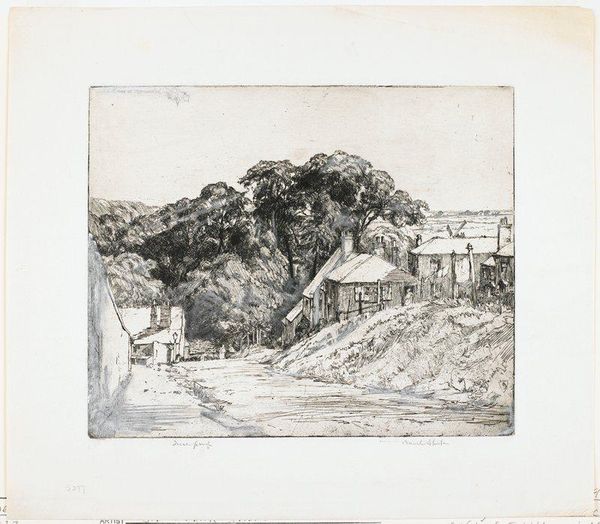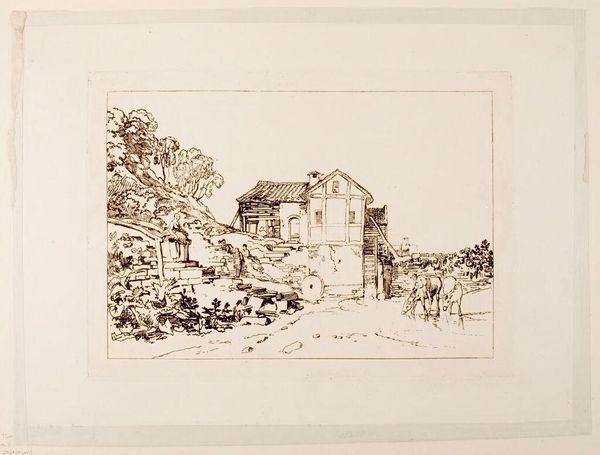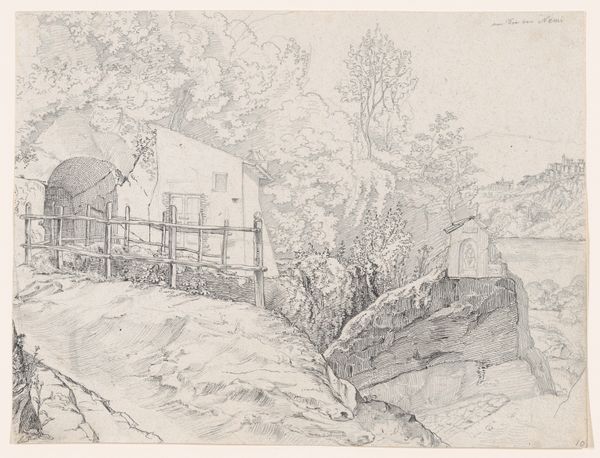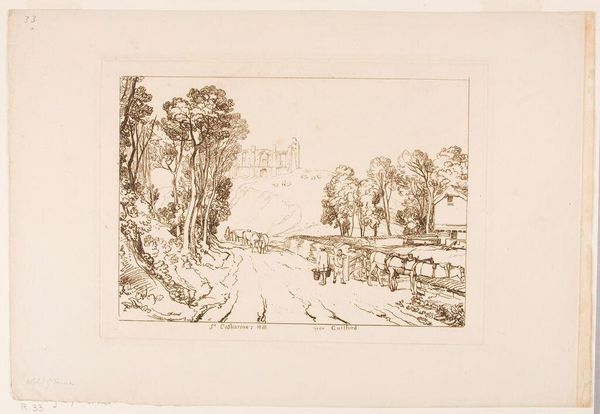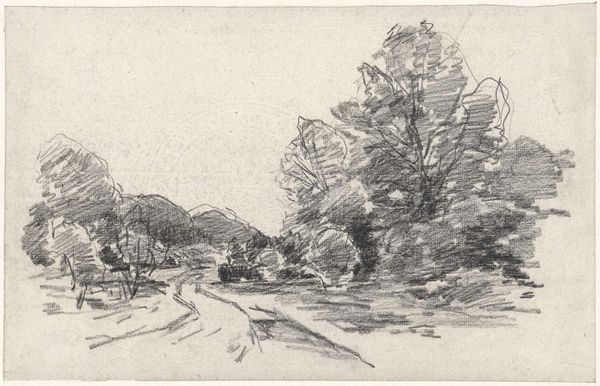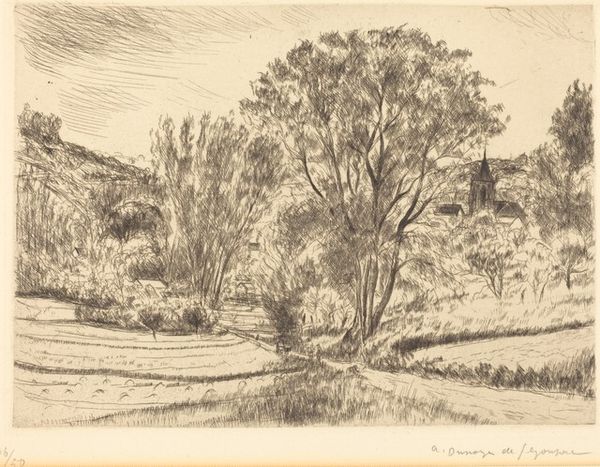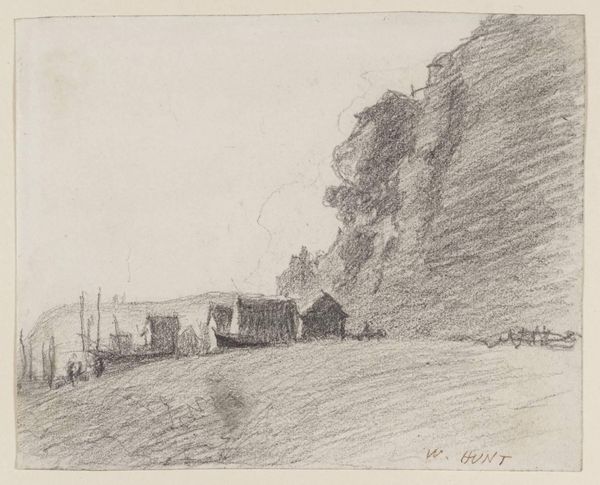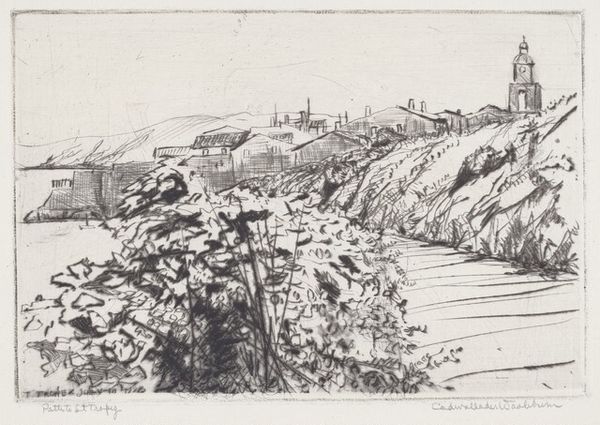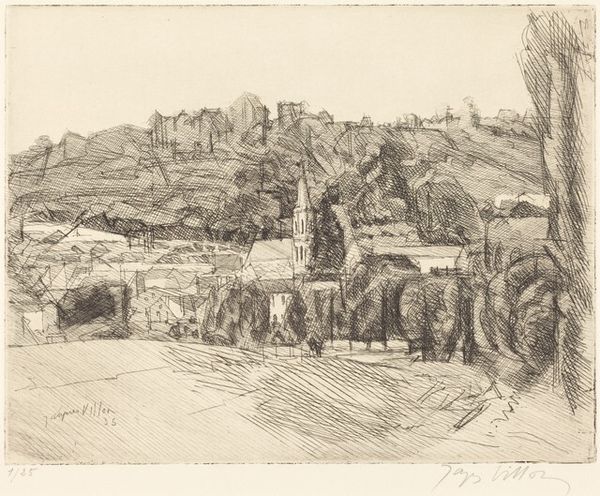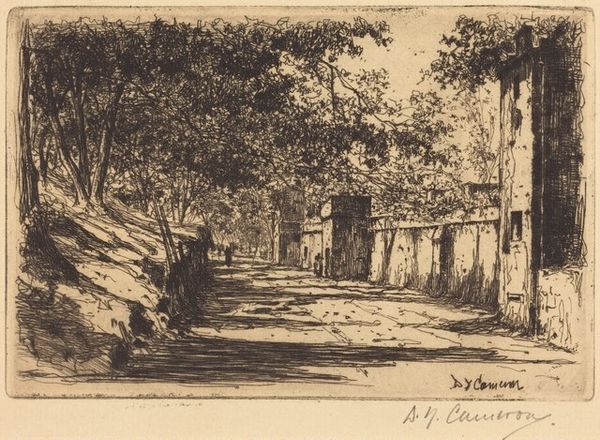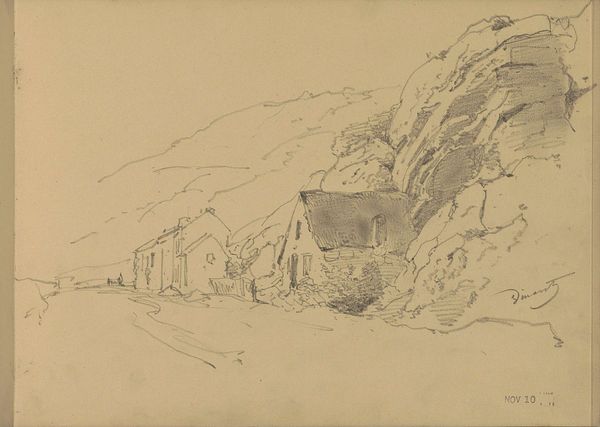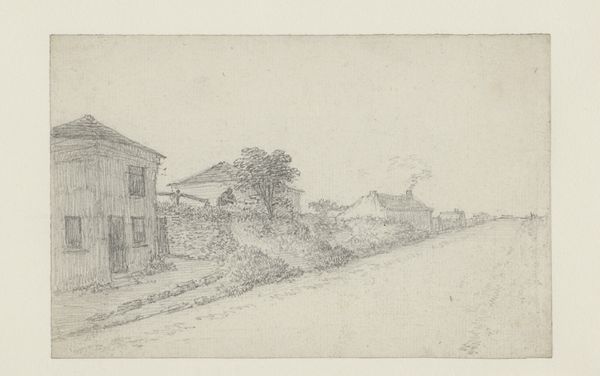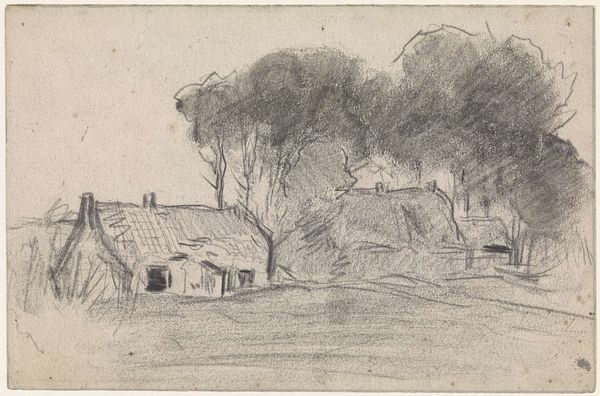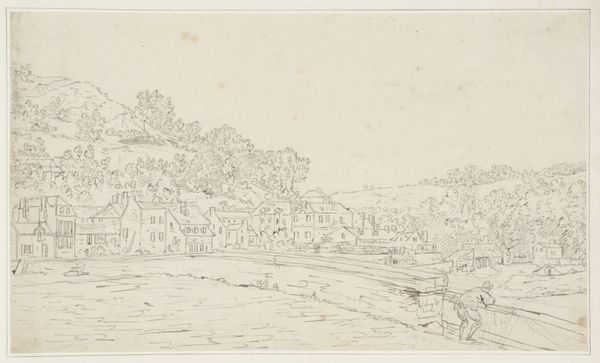
drawing, print, etching, ink
#
drawing
#
ink drawing
# print
#
etching
#
landscape
#
etching
#
ink
Dimensions: 8 3/16 x 9 15/16 in. (20.8 x 25.24 cm) (plate)9 3/8 x 11 5/8 in. (23.81 x 29.53 cm) (sheet)
Copyright: No Copyright - United States
Curator: Sir Frank Short's "A Lane in Arundel," created in 1907, depicts a quaint, seemingly undisturbed English village scene rendered as an etching in ink. What are your immediate impressions? Editor: It feels quiet. The textures created through the etching process lend a stillness, a hushed intimacy, even. There's a simplicity of labor on display here - the cross-hatching defining the trees, the varied stroke weights articulating the cottages - it’s a direct relationship between the hand, the tool, and the plate. Curator: Indeed. Considering this was made in 1907, the landscape genre carries the weight of Victorian-era romanticism, though Short pushes against idealized representations, focusing on everyday rural life. We can see through an intersectional lens, perhaps, a turn away from the grand narratives towards a more democratic view. Editor: I see the labor embedded in the making, though, not just in the depiction. Etching demands careful planning and execution; it is about both control and surrender to the material. We are distanced from the source but yet the print as an index shows traces of that direct contact that always leaves an impression. Curator: Absolutely, that intersection of planning and execution parallels the societal forces shaping rural communities at the time. Consider the enclosure movements, for instance, and their impact on land ownership. Short, perhaps unknowingly, documents a vanishing way of life affected by larger socio-economic changes. Editor: There's definitely a sense of something fading – like an elegy. The lines, however delicate, form solid structures - the cottages, the trees - providing material grounding despite the melancholic atmosphere. Short transforms humble materials into a compelling visualization of a time and place that holds so many connections to its materiality. Curator: So, we’re invited to engage with a particular moment not as a detached observer, but as witnesses, maybe even as active participants. I mean the artwork operates as more than just a visual document of Arundel in 1907. Editor: Yes, that's well said. The making as it appears on the etching emphasizes how art itself functions as social labor, both documenting and shaping the landscapes it portrays. I find this a valuable piece, as it’s making transparent those acts. Curator: I agree. Examining "A Lane in Arundel" offers not only a view of a specific time, but encourages us to ask ourselves whose stories are told.
Comments
No comments
Be the first to comment and join the conversation on the ultimate creative platform.
